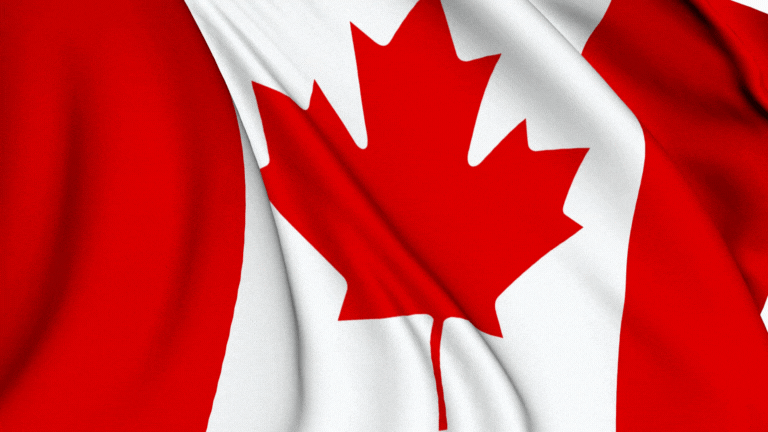Please be aware that this article may contain links to products and services we recommend. If you click on any of these links, we may earn a commission at no extra cost to you. We only endorse products and services that we believe will add value to our readers. Learn more here.
Canada Flag: History & Symbolism
Hack The Quiz
5/8/20242 min read
This article explores the history and symbolism of the Canada flag, highlighting Canada’s location in North America and explaining how its bold design reflects the country’s values of unity, peace, and diversity.
Where is Canada?
Canada is located in North America, stretching from the Atlantic Ocean in the east to the Pacific Ocean in the west, and extending northward into the Arctic. It shares the longest undefended border in the world with the United States. Canada’s vast landscape includes forests, mountains, prairies, and lakes, making it a country rich in natural beauty.
Canada became a self-governing Dominion within the British Empire on July 1, 1867. It was not until February 15, 1965, however, that the iconic maple leaf flag was adopted as the official flag of Canada, symbolizing the country’s national identity and its emergence as a unified, independent nation.
The History of the Canada Flag
The current flag of Canada was officially adopted on February 15, 1965, replacing the Red Ensign, which had been used informally for decades. The new design was chosen after years of debate, as Canada sought a flag that would represent all of its citizens and reflect its unique identity.
Prime Minister Lester B. Pearson initiated the search for a new national flag in 1964. A national committee was formed to select a design, and after reviewing thousands of entries, they settled on the now-iconic red and white design featuring the single maple leaf.
The maple leaf had long been a symbol of Canada, representing its vast natural environment and the unity of its people. The simple, bold design of the flag made it instantly recognizable and became a symbol of national pride and identity.
Breaking Down the Canada Flag’s Design
The flag of Canada, commonly known as the Maple Leaf Flag, is one of the most recognizable in the world. It features a red field with a white square in the middle, inside which sits a stylized red maple leaf. Each element of the flag holds specific meaning.
Let’s break down the elements of the flag:
The Red Field
The red color on both sides of the flag represents Canada’s sacrifice in wars, particularly the World Wars, where many Canadians fought and died. It also reflects the red found in the emblem of the British Empire, connecting Canada to its colonial past.
The White Square
The white square in the center of the flag symbolizes peace and unity. The color white also reflects Canada’s snowy winters and its northern geography.
The Maple Leaf
The maple leaf, with its 11 points, represents the diverse landscape of Canada and its people. The maple leaf had been a symbol of Canadian identity since the 18th century, representing Canada’s natural beauty and its vast forests. The stylized leaf on the flag is meant to be a modern, clean representation of the country’s connection to nature.
Final Thoughts
The flag of Canada is a simple yet powerful symbol of the country’s unity, peace, and natural beauty. The red and white colors honor both Canada’s past and its place in the world, while the maple leaf stands as a symbol of the country’s rich environment and the pride Canadians have in their identity.
Since its adoption in 1965, the maple leaf flag has become a cherished symbol of national pride, flown during national celebrations like Canada Day, sporting events, and international gatherings. Every time the flag is raised, it represents the values of diversity, peace, and unity that Canadians hold dear.
Expand your mind ...
Explore trivia that broadens your understanding and knowledge of the world.
WE ARE HERE FOR YOU
JOIN US and hack the quiz
info@hackthequiz.com
© 2024. All rights reserved.



